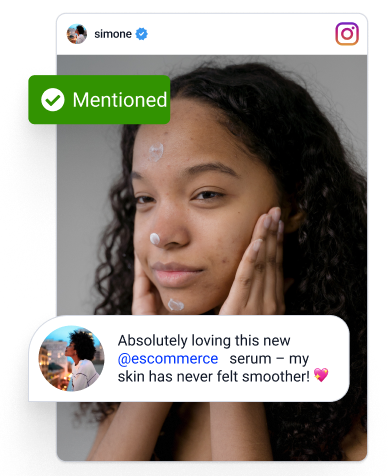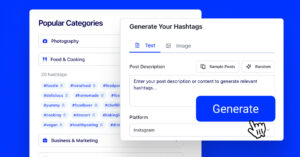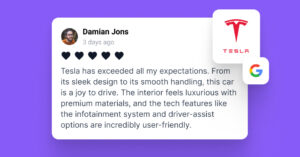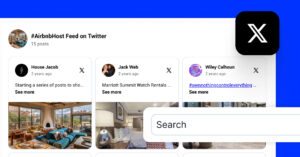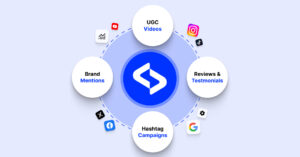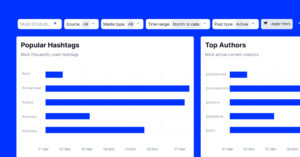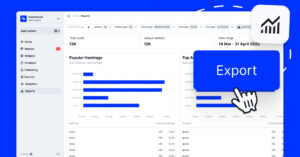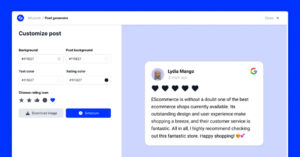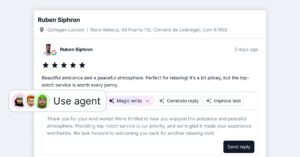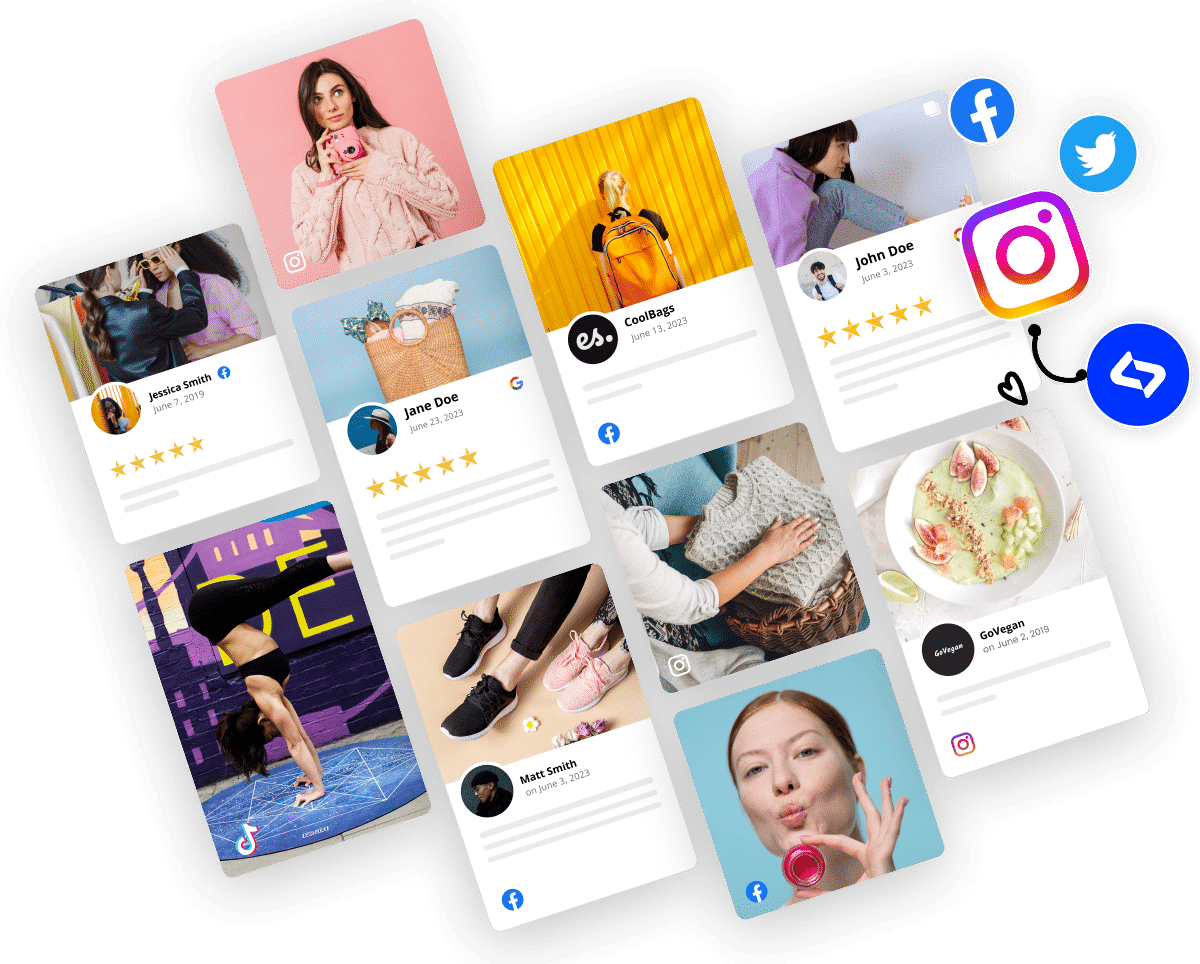You probably know that a social media crisis can erupt in minutes as you’re reading this. All it takes is one negative tweet, a misunderstood ad, or a delayed response.
That’s why having a clear social media crisis management plan in place isn’t optional anymore. It’s essential for managing your social media reputation.
Whether you’re a growing startup or a global brand, knowing how to manage social media crises can save your reputation, and of course, your bottom line.
So, I’ll walk you through what you need to do, with examples, social media management tools, and a plan you can follow whenever a crisis erupts!
What is a social media crisis?
A social media crisis is any unexpected issue that spreads rapidly online and harms your brand’s reputation, such as a viral complaint, a controversial post, or a rumor.
The key difference between a crisis and regular negative feedback is scale and urgency. Crises demand immediate, strategic action—not just a polite reply.
Put simply, it’s when something online goes wrong fast, and you need to apply online reputation management strategies to fix your brand image.
Why is social media crisis management important?
Here’s why social media crisis management is critical for every business:
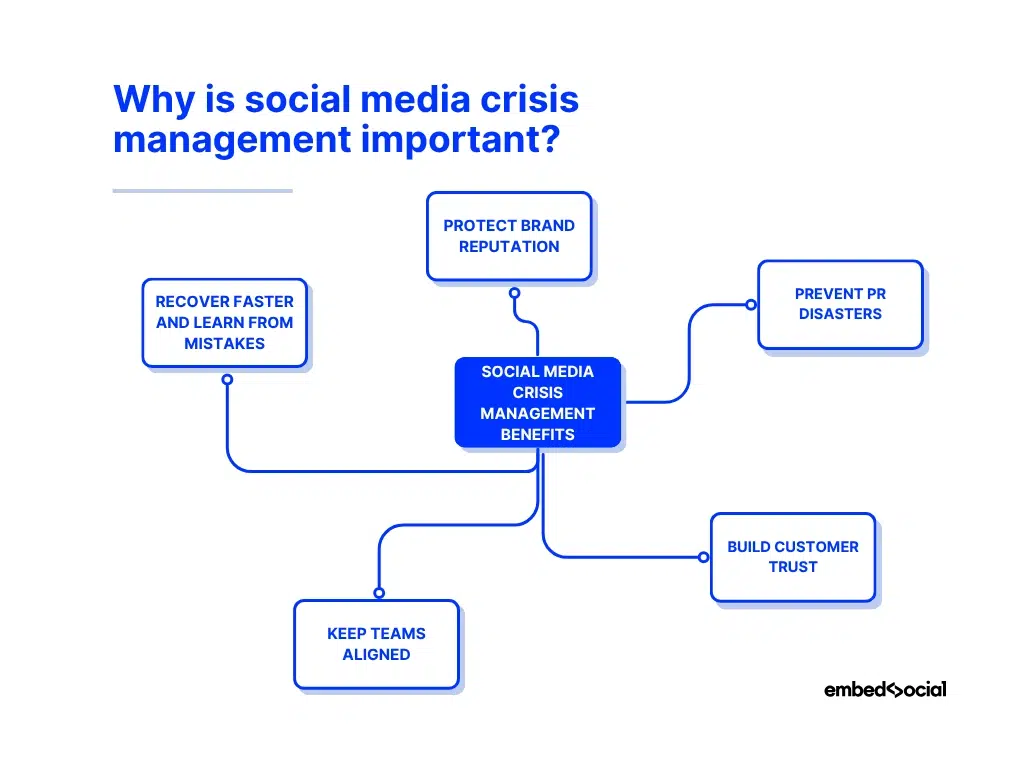
- Protect brand reputation during high-risk moments—customers judge how you respond just as much as what went wrong;
- Prevent minor issues from becoming PR disasters—early detection and fast action help contain problems with your brand sentiment;
- Build customer trust through transparency and empathy—thoughtful communication shows you care, which is doubled with the use of social proof;
- Keep teams aligned and prepared under pressure—clear crisis plans reduce confusion, minimize delays, and help everyone respond with confidence;
- Recover faster and learn from the experience—organized post-crisis analysis reveals what worked, what didn’t, and gives you a roadmap to follow.
As you can see, it’s not just about damage control; it’s about showing leadership when it counts. After all, customers expect brands to take ownership of their mistakes!
Steps to develop a social media crisis management plan with the help of EmbedSocial
So, how to manage a social media crisis if and when it occurs (trust me, it will sooner or later!)? As it stands, there are several important steps you should take:
- Identify potential crisis scenarios
- Assemble a dedicated crisis response team
- Develop clear communication protocols
- Monitor social media channels continuously
- Engage with your audience promptly and empathetically
- Evaluate the crisis response post-incident
- Update your crisis management plan regularly
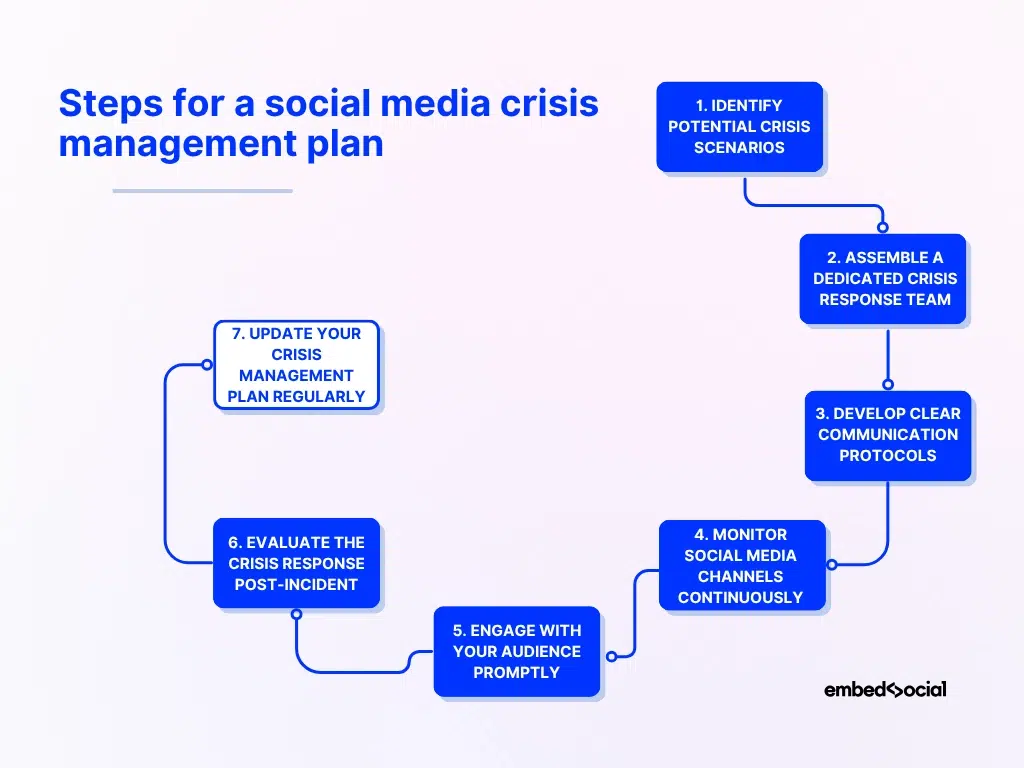
1. Identify potential crisis scenarios
The first step in any crisis management in social media is knowing what could go wrong. Not all issues will spiral into full-blown crises, but some can.
Think in terms of risk areas: product defects, employee misconduct, data breaches, supply chain delays, or even poorly received ad campaigns.
It’s critical to list out these risks and evaluate how they might show up on social media. Would they trigger a flood of negative comments? A trending hashtag? A viral video? By planning for these possibilities, you can move faster and smarter when trouble hits.
Example: A major retailer faced backlash when a promotional tweet was seen as tone-deaf during a national tragedy. Because they hadn’t outlined scenarios around cultural sensitivity, they were slow to respond, thus amplifying the damage.
How EmbedSocial helps: Use EmbedSocial’s social listening to scan mentions, hashtags, and sentiment around your brand and competitors. This allows you to spot emerging concerns early and build your list of potential crisis triggers based on actual customer chatter.
2. Assemble a dedicated crisis response team
When a crisis hits, scattered responses create confusion and delay. You need a team in place before things go wrong. That includes roles across PR, social media, legal, and customer service, as these are people who can act fast and speak for the brand.
For instance, one person should lead the crisis response, another should approve external messages, and others should handle direct communication.
Clear roles reduce hesitation when every minute matters!
Example: A quick-service restaurant faced a viral video about kitchen hygiene. Because they’d already assigned crisis roles, they responded within hours—PR issued a statement, customer service replied to concerned followers, and legal cleared the messaging.
How EmbedSocial helps: Teams can use EmbedSocial’s ‘Team Accounts’ to track mentions and hashtags, and assign replies to online reviews. Everyone sees what’s happening and responds in one place without stepping on each other’s toes and roles.
3. Develop clear communication protocols
In a crisis, you can’t afford mixed messages. You need internal protocols that cover tone, approval timelines, and how to adjust social media crisis communications for each platform. Do this to avoid delays and keep your brand voice consistent.
You don’t need to script every word, but you should prepare templates for likely scenarios, such as product issues, PR fallout, negative media coverage, and so on.
Example: A clothing brand released a campaign that unintentionally offended part of its audience. The team hesitated on a response because there was no agreed-upon tone or flow for sensitive situations. The delay made the brand appear indifferent.
How EmbedSocial helps: With EmbedSocial, you can build out review response templates for different platforms, keep them updated, and use an advanced Google review autoresponder to send out quick replies whenever you get new feedback.
4. Monitor social media channels continuously
Crises rarely start with a headline, and they often begin with a single comment, review, or tweet. So, ongoing monitoring helps you catch these signals early.
And it’s not just about tracking your brand name. You also want to:
- Monitor keywords related to your industry or product;
- Do a sentiment analysis for shifts among your audience;
- Follow social media trends around competitors or partners.
Example: A beauty brand failed to notice rising criticism on TikTok over one of its ingredients. By the time it hit Twitter, the backlash was massive. If they had caught the trend earlier, they could have addressed it head-on.
How EmbedSocial helps: EmbedSocial tracks mentions and sentiment in real time. You get alerted to spikes in specific keywords or sudden mood shifts, so you step in early.
Learn more:
How to Monitor Instagram Hashtags
How to Track Instagram Mentions to Get UGC & Insights
How to Track X Hashtags For Insights & Trends
How to Track Facebook Mentions to Get Fresh UGC
Threads Monitoring: How to Search, Track & Collect Mentions & Keywords
5. Engage with your audience promptly and empathetically
When people are upset, they want to be heard, not ignored or brushed off. Therefore, how you respond publicly speaks volumes. A simple acknowledgment, even before you have a full resolution, can go a long way in building trust.
To make the most out of your reply, use a calm, human tone. Don’t deflect blame. And stay active in replies, not just in your official statements.
Example: An airline experienced a system failure that caused major delays. Instead of hiding, they posted regular updates, replied to tweets in real time, and thanked people for their patience. The transparency helped defuse growing frustration.
How EmbedSocial helps: With EmbedSocial’s ‘Responses’ inbox, you can respond to your Google reviews at any time, and even use an AI agent to reply for you.
6. Evaluate the crisis response post-incident
Once the situation cools down, it’s time to look back. What worked? What didn’t? Were there delays in approval? Did your messages land well? This step is where you turn a stressful situation into a learning opportunity, so you don’t make the same mistake twice.
Bring the team together and review:
- What triggered the crisis?
- How fast did you react?
- What feedback did you get from your audience?
Example: A health tech company reviewed its crisis playbook after a controversial ad campaign. They found that unclear sign-off responsibilities had slowed their response, and updated the plan immediately.
How EmbedSocial helps: Dive into sentiment analysis and comment history in EmbedSocial to measure how people responded across platforms to refine your plan.
7. Update your crisis management plan regularly
Your social media crisis management plan isn’t a one-and-done document. As your business changes—and as new risks emerge—you need to revisit and adjust it. So, every crisis you handle (or narrowly avoid) is a chance to make the next one easier.
Recheck your roles, tools, and response timelines. Replace outdated messaging. And factor in new channels like Threads or emerging platforms.
Example: After a rough product recall, an electronics brand added an influencer response policy to its crisis plan. It turned out to be a lifesaver during their next PR hiccup when a major partner misspoke online.
How EmbedSocial helps: By continuously tracking public feedback and trends through EmbedSocial, you’ll always have fresh data to inform how your plan evolves.
3 real-world examples of social media crisis management
Even the biggest brands aren’t immune to backlash. But, they know how to craft the perfect response, as evident in these three social media crisis examples:
1. Balenciaga’s controversial ad campaign
In November 2022, Balenciaga released an ad campaign featuring children holding teddy bears dressed in what appeared to be bondage gear. The campaign was met with widespread outrage on social media, with accusations of promoting inappropriate content involving minors.
- Response: Initially, Balenciaga denied responsibility and filed a lawsuit against the production company. However, after a week of intense backlash, the brand issued public apologies, took responsibility for the oversight, and announced new content validation procedures.
- Lesson: Delaying acknowledgment and shifting blame can exacerbate a crisis. Swift, transparent communication and accountability are crucial in managing public perception.
2. KFC’s chicken shortage in the UK
In February 2018, KFC faced a supply chain issue in the UK, leading to the temporary closure of over 600 outlets due to a chicken shortage. The situation quickly became a topic of ridicule and frustration on social media, with hashtags like #ChickenCrisis trending.
- Response: KFC responded with humor and transparency, issuing a full-page newspaper ad that rearranged their logo to read “FCK” on an empty chicken bucket, accompanied by an apology. They also provided regular updates on store reopenings to their social media users and addressed customer concerns directly on social media.
- Lesson: Acknowledging the issue with humility and maintaining open communication can help preserve brand loyalty, even during operational failures.
3. United Airlines’ passenger removal incident
In April 2017, a video surfaced showing a passenger being forcibly removed from an overbooked United Airlines flight, resulting in injuries. The footage went viral, sparking global outrage and significant damage to the airline’s reputation.
- Response: United’s initial response was criticized for its lack of empathy, referring to the incident as “re-accommodating” passengers. Following public backlash, the CEO issued a more sincere apology, and the airline implemented policy changes to prevent similar incidents.
- Lesson: Timely and empathetic communication is vital in crisis situations. Failing to address public concerns adequately can lead to prolonged reputational harm.
Why use EmbedSocial for crisis management on social media?
When a crisis hits, speed, clarity, and coordination are everything. EmbedSocial brings together powerful monitoring, response, and collaboration tools—so your team can act fast, stay aligned, and protect your brand’s reputation in real time.

Here’s how EmbedSocial supports your crisis response every step of the way:
- Track brand mentions and keywords in real time—monitor what people are saying about your brand across social media platforms and websites;
- Analyze positive and negative sentiment automatically—understand how people feel about your brand with AI-driven sentiment analysis;
- Discover trending topics and keywords—see which topics or hashtags are gaining momentum around your brand or industry;
- Centralize brand insights in one dashboard—view mention volume, keyword heatmaps, and sentiment trends from a single source;
- Export reports easily—share social insights with your team or stakeholders to inform decisions and crisis response updates.
How to set up social listening via EmbedSocial in 5 simple steps?
When using EmbedSocial, it’s very straightforward to set up your social listening strategy, as it only takes these 5 simple steps:
1. Create your EmbedSocial account
First things first, you must create an EmbedSocial account and log in.
2. Connect your social media sources
Then, just connect all the social media accounts you want to monitor via the ‘Sources’ tab (left ribbon menu) and tap ‘Add new source’:
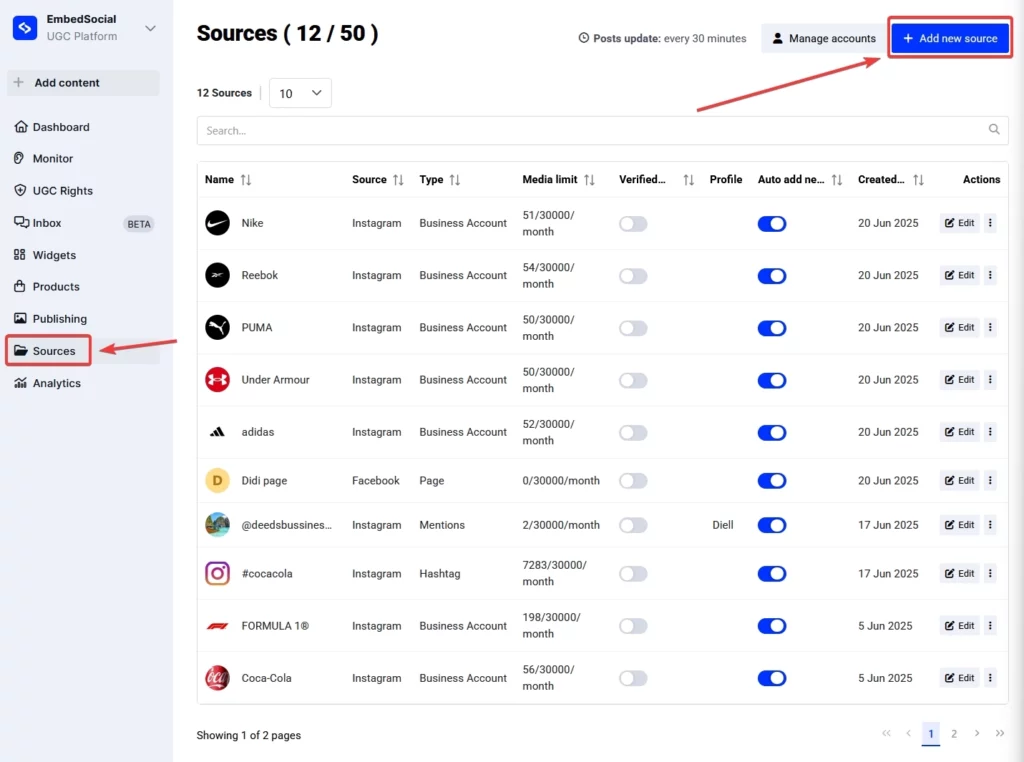
3. Monitor your social media content
Next, head over to the ‘Monitor’ tab to find all the mentions, hashtags, reviews, and all other types of social media posts you want to monitor and analyze:
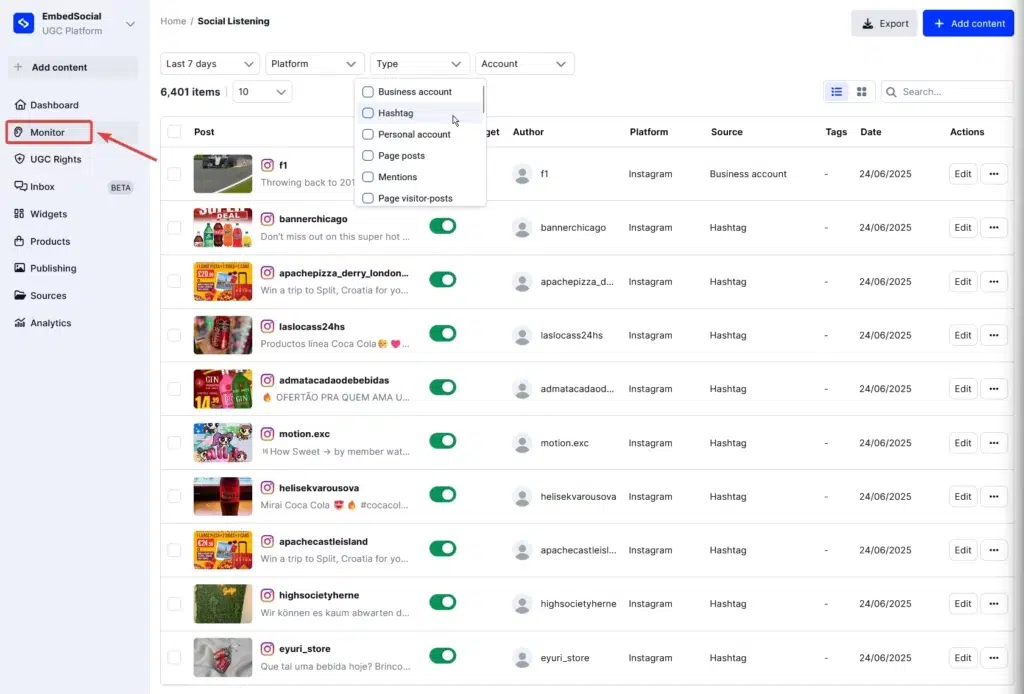
4. Export all your social media data
You can also export this data to analyze your brand sentiment or follow your competitors. Just tap ‘Export’ (top-right corner) after choosing the posts you want exported:
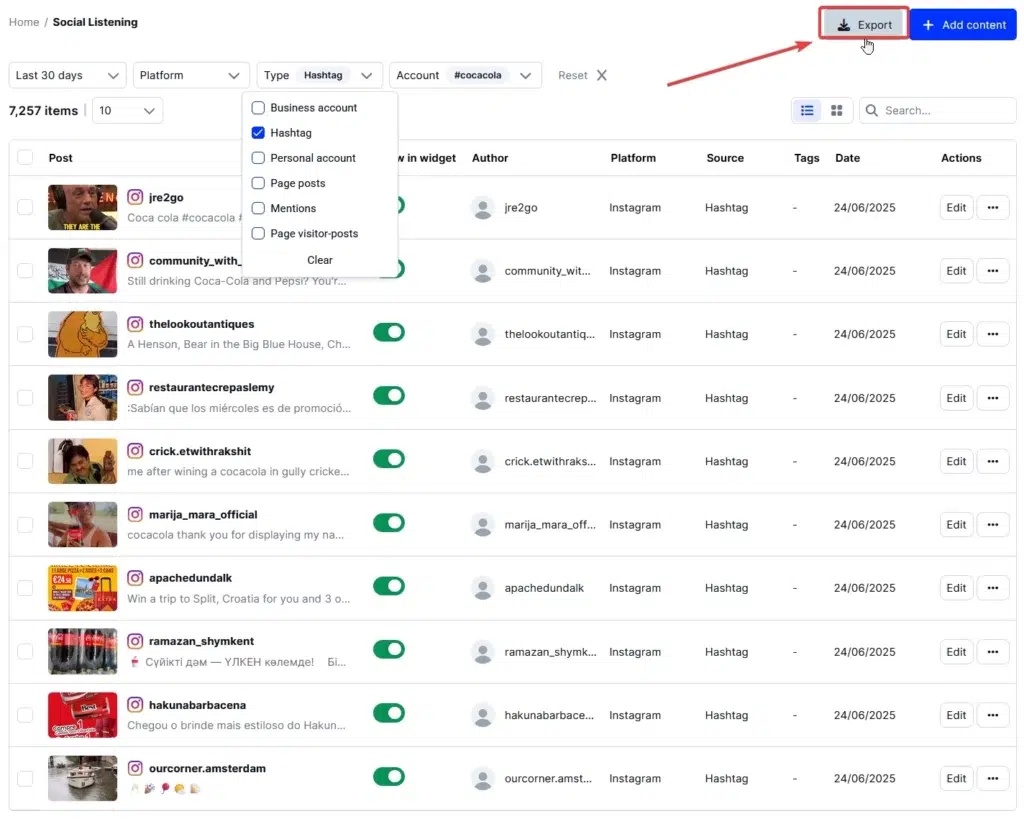
5. Use the analytics feature
Lastly, upload said data in the ‘Analytics’ tab (left ribbon menu) to get a detailed glimpse into what makes your brand great and where you can improve:
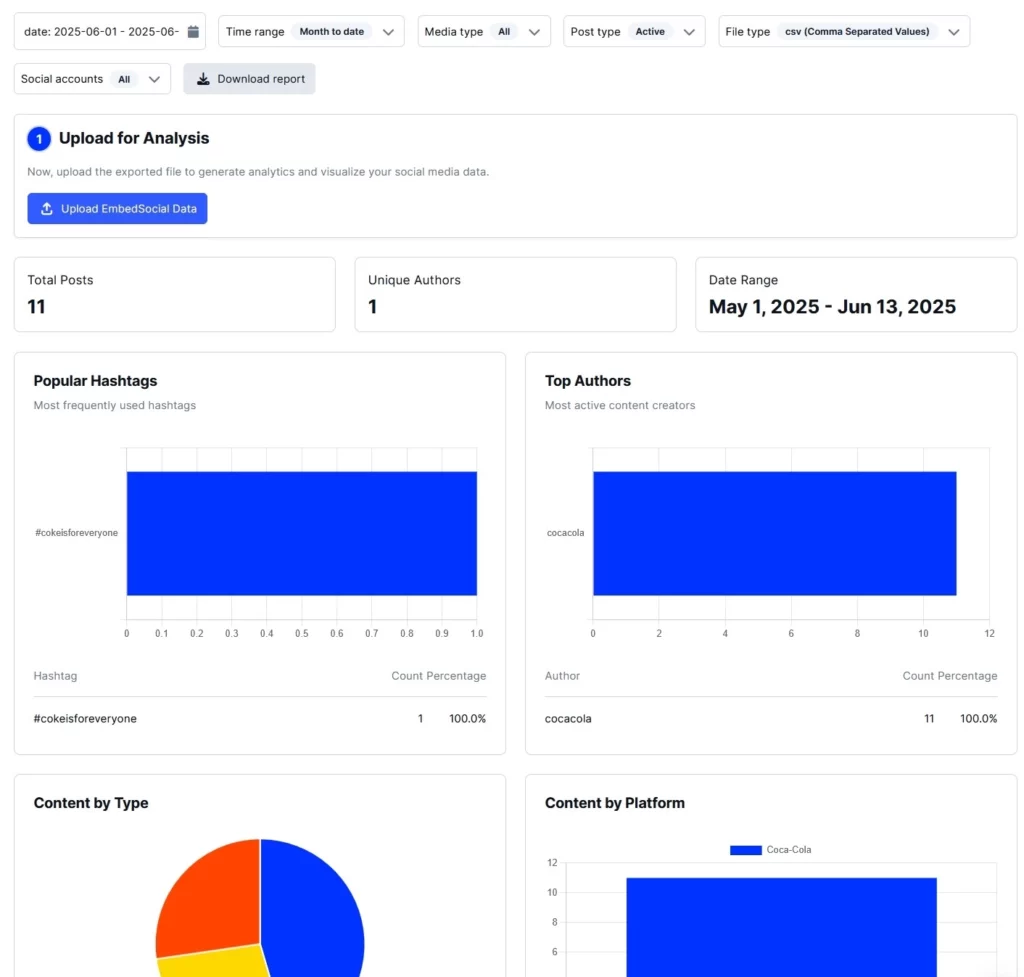
Note: There are various KPIs you can track: number of posts, top authors, content type, platforms used, used keywords, overall sentiment, post frequency, etc.
5 best practices during a social media crisis
Even with a plan in place, how you act in the moment matters. Let these best practices help you navigate any social media crisis with clarity and confidence:
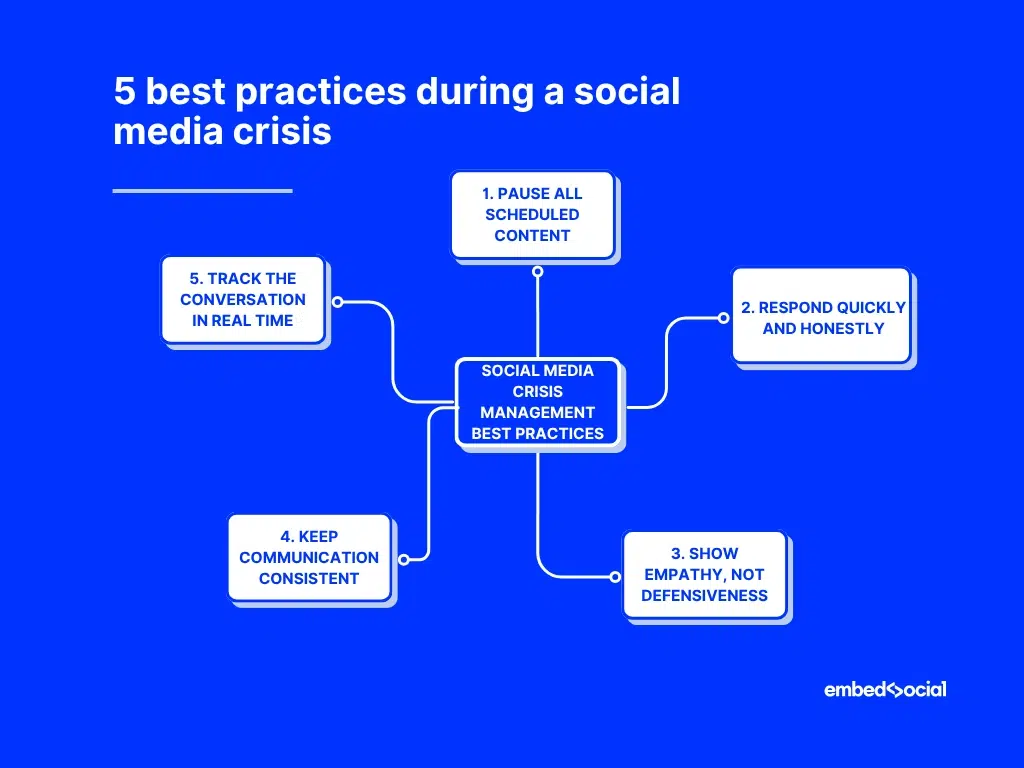
1. Pause all scheduled content
Regular posts can seem tone-deaf during a crisis. Hit pause across platforms until the situation is under control and messaging is aligned.
2. Respond quickly and honestly
Silence is risky. Acknowledge the issue early—even if you don’t have all the answers yet—and follow up with clear updates as they develop.
3. Show empathy, not defensiveness
People want to feel heard. Use calm, human language and avoid shifting blame, even if you feel unfairly targeted. You need to calm everyone down first.
4. Keep communication consistent
Whether it’s a tweet, an email, or a video, your message should sound like it’s coming from the same brand voice. Confusion only adds fuel.
5. Track the conversation in real time
Stay close to your brand sentiment. Monitor how people are reacting so you can adjust your messaging and respond to emerging concerns faster.
8 effective strategies for managing social media crises by experts
Here is what 8 thought leaders had to say on the topic of managing social media crises:
Transparent crisis response builds customer trust
Our main goal in managing a social media crisis is to focus on timely and transparent communication. One tactic that has worked for us, as soon as something happens, we always respond public facing. Unlike a direct message or email that gets pinned on one person, we want to respond publicly whether it is a complaint about a product or simply bad communication! We aim to respond as soon as possible to not allow rumors to swirl or spread and show our customers we are at least paying attention. We usually share what we are going to do about it so the community feels heard and valued. In one case, a shipping delay caused customer frustrations. As we responded and acknowledged the challenge openly and quickly, we had unbelievable customer responses and many felt the need to tell the world about how we handled the customer challenge. They appreciated our honesty and our approach to what we recognized was a tough moment for them as customers! In many cases, this builds recruits as brand advocates.
The biggest takeaway for brands is that the response to a crisis takes a potential loss in experience and turns it into a trust-building opportunity. Transparency and speed is important but it is about responding with empathy. They want to know the brand cared and they took the steps to do something. This is a principle we live by here at Valor, and it has changed how we choose to communicate with our community during difficult times.
Riley Westbrook, Creative Director & Co-founder, Valor Coffee
Quick video response prevents payment crisis escalation
During a payment integration issue last summer, a system glitch caused about 7 percent of contractors to report missing payouts, which spilled onto social media within two hours. I immediately stepped in and recorded a two-minute video from my desk explaining exactly what happened, when it would be resolved, and how we were covering affected accounts with a 15 percent goodwill bonus. I posted it directly to Twitter, Facebook, and LinkedIn and tagged every contractor involved. No overly polished PR talk, no filters, just me and the facts.
The biggest lesson here is that silence multiplies suspicion. Brands often wait too long, run things through legal, or post statements that feel sanitized. That video response not only prevented escalation but increased contractor loyalty. We saw a 22 percent drop in support tickets within the first three hours and closed the issue in under 12. If your instinct is to pause and polish, you are already behind. Speak fast, own the mistake, and talk like a human, not a press release. That is what actually works.
Todd Stephenson, Co-founder, Roof Quotes
Face-to-face video clarifies brand identity confusion
I dealt with a contractor backlash once after a storm-chasing company used a name similar to ours and botched a few jobs in the area. Calls started rolling in from angry homeowners thinking we had cut corners. Instead of scrambling to push a generic post, I filmed a short on-site video walking through one of our recent jobs in that same neighborhood. I spoke directly to the camera, explained what happened, and clarified the confusion while showing our crew working and what our actual trucks looked like. I posted it on every platform, pinned it, and answered every comment myself for two days straight.
The lesson here is clarity has to come from you, not your logo. A templated statement does not fix damage when your name is on the line. Show your face. Speak plainly. Do not hand it off to your marketing guy. People are angry because they feel tricked. The only way to turn that around is to talk to them like neighbors, not like an ad campaign. That video brought in five new jobs the same week and shut the noise down. People just wanted someone to be accountable. I made sure they saw exactly who that was.
Ali Hassan, Founder / Construction & Project Consultant, Rabbit Roofing
Swift action contains narrative in crisis
The best way to handle a social media crisis is to respond quickly, honestly, and provide measurable steps. I remember working with a brand that faced a large backlash due to a post that went viral. After a few hours of doing nothing, rather than wait for a few days for the situation to blow over, the company responded to the backlash with a sincere apology, addressed the backlash themselves, and provided steps to correct the events. It only took a couple of hours as opposed to a couple of days. Since the team took action so quickly, they were able to contain the narrative and minimize damages. The most important part was taking ownership over the issue and providing a few solutions.
From this experience, one major lesson I learned in a social media crisis is time and authenticity matter most. It is important for brands to respond quickly, take ownership of mistakes, and provide clear measurable steps. A response a few days or vague response will only make the situation worse. Since that experience, I have had the opportunity to adopt this plan into my work, making sure my clients have a clear crisis response plan in place including steps for monitoring communications in real-time and alerting clients to that fact, and making it clear that it may not require a reaction immediately. For example, this helps to keep the damage from climates to the brands image, credibility, and trust from the audience.
Adam Yong, SEO Consultant & Founder, Agility Writer
CEO video response transforms crisis to opportunity
The best social media crisis plan I’ve witnessed is one based on proactive vulnerability and an immediate plan of action. Not a plan of defense or delay. Silence is usually interpreted as guilt, and it can only make a bad situation worse. A brand that acknowledges a wrong quickly, and describes the steps they are taking to make it better, builds more trust.
I witness an example recently with a national food delivery service come under fire when a video of one of their drivers mishandling an order, was posted and immediately reached 5 million views in less than six hours. Most brands would delay the response. This brand’s CEO was very interested in the issue. Less than three hours after the video went viral, the CEO had posted a direct video on the same platform. In the video, the CEO acknowledged directly that the action by the driver was unacceptable and apologized genuinely to the customer. The CEO clearly articulated two actions taken by the delivery service. One: the driver is no longer working for them. And two: the CEO said they would immediately review all driver training, system-wide (all 50 states). and that new guidelines would be put in place within 72 hours.
The response was astonishing. They shifted the negative conversation to positive discussions about their immediate, transparent, accountable follow-up response. What could have been a devastating crisis presented them an opportunity to build brand trust. The key takeaway: be real and immediate, and be accountable. Don’t wait for all the answers. Acknowledge the situation, express regret, and immediately communicated specific actions taken. This can provide an action orientated, immediate transparent, moment that can turn a crisis in to brand loyalty.
Alex Smith, Manager & Co-owner, Render 3D Quick
Precision listening loop shifts social media sentiment
In the early days of launching my brand, a post was misconstrued and sparked a firestorm across all our social media platforms. Rather than simply reacting, I rolled out what I call a “Precision Listening Loop.”
We utilized sophisticated listening tools (Brandwatch + Talkwalker) along with sentiment mapping and divergent trend monitoring. This allowed us to measure not only what was being said, but how quickly it was being disseminated and where — Reddit threads, niche Facebook groups, and international subcommunities that would have otherwise flown under the radar. It gave us time and exposed the exact emotional pulse I needed to confront.
We replied within 3 hours — based on the tone of the platforms, and followed with a behind-the-scenes look at our intent and next steps. Within 48 hours, sentiment shifted 64% to positive or neutral, and engagement doubled.
The important lesson here is that speed DOES matter, but relevance matters more. Generalities can provoke, while focused acknowledgment disarms. I would say that crisis management is less about sweeping PR gestures and more about microengagement. It’s about knowing where the fire is hottest and getting there first.
Nikolay Petrov, Founder & CTO, ZontSound
Swiftness prevents damaging brand narratives
The most effective strategy when handling a social media crisis? Swiftness.
I say this as someone who worked directly with a major brand that did *not* respond with swiftness, and the narrative ate them alive (and still sticks with them to this day).
The faster you jump on a crisis narrative, the faster you can pivot it in your favor.
Melissa Dawson, Social Media Lead, Western Digital
Preparedness powers effective crisis management strategy
The most effective social media crisis management strategy I have ever devised mainly involved preparedness, message consistency, and rapid response. During an extraordinarily high-visibility matter in which incorrect information was being circulated about our brand, we engaged a wide-reaching crisis team almost immediately, with representatives from PR, legal, and customer care, to ensure alignment on facts and tone. Within an hour, we stepped in with a calm, fact-based statement—in which we seemed to acknowledge the concern, yet without being defensive and reiterated our values.
We continued to provide transparent updates, with timestamps, on all relevant channels and launched a centralized landing page to consolidate traffic and block misinformation. Our social media managers were empowered to respond within channels with approved language, supporting real-time engagement without sacrificing that consistency.
Critical lesson: Brands that remain faultless in the face of crises are those that never expect a crisis to strike. Along with a predefined playbook of crisis, trained spokespeople and internal clarity on criteria for escalation ought to be respected as non-negotiable in this 24/7 media environment.
Yaniv Masjedi, Chief Marketing Officer, Nextiva
Post-crisis analysis and recovery
Тhe work isn’t over after the social media crisis occurs. What happens next is just as important, as it’s your opportunity to learn, rebuild, and come back stronger.
Start by gathering your team for a clear-eyed debrief. Review what triggered the crisis, how quickly you responded, how the public reacted, and what outcomes followed. Be honest about what worked and where things broke down.
From there, update your crisis plan with those learnings. Improve your communication templates, adjust your monitoring criteria, or assign new roles if needed.
This is also the time to repair relationships. If the crisis hurt trust with customers or partners, be proactive and share what actions you’ve taken.
EmbedSocial helps here, too. You can dive into sentiment trends, engagement metrics, and message history to evaluate how your audience responded. This data gives you the insights needed to improve your plan and restore brand trust with confidence.
Remember: Recovery is about leveling up your customer relationships.
Conclusion: Strengthen your social media crisis management with EmbedSocial!!!
Social media crises can feel overwhelming, but with the right strategy, any social media manager can handle them. So, look into the latest reputation management trends to get ready.
From monitoring tools to response templates, your brand needs a system that kicks in the moment trouble starts. That’s where platforms like EmbedSocial help you stay ahead.
Don’t wait for the next crisis to figure things out. Take control of your social media crisis management with the right online reputation management software!
Ready to protect your brand?
Try EmbedSocial’s real-time monitoring and crisis response tools today!!!
FAQs about social media crisis management
What is social media crisis management?
Social media crisis management is the process of preparing for, identifying, responding to, and recovering from brand-related issues that escalate on social platforms. It involves proactive planning, real-time monitoring, and coordinated responses to protect a company’s reputation.
How would you handle a social media crisis?
Pause all posts, assess the situation fast, and respond with clarity and empathy. Also, use social media crisis management tools like EmbedSocial to monitor mentions, track sentiment, and reply in real time.
What are the 5 Cs of crisis management?
Control, Clarity, Confidence, Compassion, and Consistency. These social media guidelines help you respond with a calm, focused, and trustworthy voice.
What tool is key for managing a social media crisis?
Tools like EmbedSocial, Sprout Social, Brandwatch, Talkwalker, Mention, and Brand24 can track mentions in real time, analyze sentiment, and trigger alerts. These platforms help brands stay ahead of potential crises and respond before issues spiral out of control.
How can brands effectively handle a social media crisis?
Brands should respond quickly, stay transparent, and communicate with empathy. Having a crisis management plan in place—including a dedicated crisis management team, pre-approved responses, and monitoring tools—greatly improves reaction time and effectiveness during a crisis.
